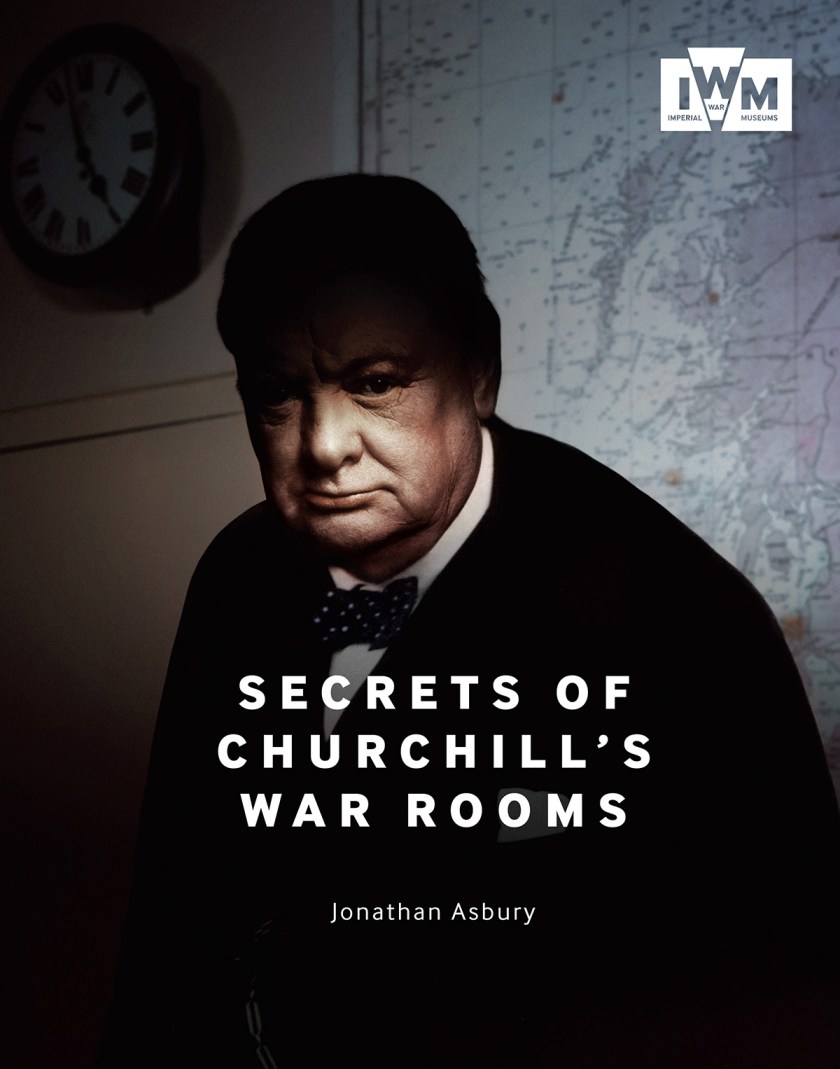
One of a number of Imperial War Museum (IWM) locations in and around London, Churchill’s War Rooms is the product of both history itself and a number of experts painstakingly recreating the secret underground bunker of British prime minister and military genius Winston Churchill. The World War II era bunker was first opened to the public in 1984, and after undergoing a major renovation in 2005, is now open daily.
And while you could theoretically buy a first-class ticket and travel to London to visit the landmark and its complementary museum, RealClearLife would like to turn your attention to the book you should acquire and read before you ever step foot inside them.
Getting its U.S. release via the University of Chicago Press, Secrets of Churchill’s War Rooms by Jonathan Asbury is not only a comprehensive roadmap to the IWM’s incredible exhibit, but also an extensive history lesson on how Churchill managed them, utilized them, and whom he staffed them with. Asbury, who is an expert guidebook author—having put together works on the HMS Belfast and three other Imperial War Museum sites—pored over personal accounts, letters, diaries, and countless other sources to weave together his book.
Splitting the book into four chapters of history, Asbury isn’t just retelling what is already onsite at the Churchill War Rooms museum, but providing context and an educational complement to the groundbreaking exhibit. The book’s fifth chapter is entirely devoted to discussing the preservation of the war rooms.
Below, you’ll find some of what was preserved (and is featured in Asbury’s book), along with a brief description from Asbury of how it played a role in Churchill’s World War II strategy.
The Cabinet Room

“Here the prime minister, his key ministers, and advisers would meet with the chiefs of staff to make decisions of extraordinary significance. One of the most remarkable features of the room is the way in which the tables have been laid out to create a central well with enough space for three seats. It was in this crucible that the heads of the Army, Navy and Air Force would sit—eyeball to eyeball with the prime minister, who would be hunched in the rounded wooden chair opposite. Given Churchill’s propensity to push his military chiefs as far beyond their comfort zones as they would bear, it was an arrangement freighted with tension and confrontation.”
Churchill’s Desk in His Underground Bedroom

“Churchill made four speeches from his underground bedroom. A BBC technician remembers that he had a habit of slightly varying his broadcasts from the prepared text. If anyone else tried to do his, the engineer in charge was under strict instructions to throw the ‘security switch’ and black out the alteration. Churchill, however, was allowed to get away with it.”
Large Map From the War Room Annex

“The large map on one wall of the Annex spent much of the war hanging in the main Map Room. It charts in great detail the devastating advance of the German forces in Russia in 1941–1942 and their gradual retreat in the years that followed.”
Telephone From General Hastings Ismay’s Room

“The stark cautionary message on this telephone reveals the importance of secrecy above all else.”
Switchboard Operators and Typists in Room 60

“[These] were all civilian women. During the Blitz, many of them remained underground day and night, working here and sleeping between shifts in the sub-basement below the war rooms, known as the ‘dock.’”
Caricature of Adolf Hitler

“The large map on the lefthand wall of the chiefs of staff conference room sports a curious addition. If you trace a line due west from the far north-west tip of Scotland, you will come across this hand-drawn caricature of German leader Adolf Hitler. It is not known when this mocking piece of graffiti was added.”
Entrance Pass Belonging to Wing Commander J.S. Heagerty

“Gaining access to the war rooms meant running past a strict set of security checks. Staff were issued with passes like this one, which they were expected to show without fail to the guards as they passed.”
Sugar Cubes Discovered in the Map Room

“These sugar cubes belonged to Wing Commander John Heagerty, one of the officers who manned the Map Room from 1939 through to 1945. Sugar was in short supply during the war, and Heagerty appears to have hidden his in an envelope at the back of one of his drawers, where it lay undisturbed until IWM conducted a thorough inventory of the war rooms in the early 1980s. From the shape of one of the cubes, it looks as if the officer may have conducted his own rationing system, shaving off small amounts of sugar as and when he needed it.”
Portable Sun Lamp

“To alleviate the health problems associated with working underground for prolonged periods of time, staff were made to strip to their underwear, put on a pair of protective goggles and stand in front of portable sun lamps like this one. Incidences of ‘sunburn’ were common, and one veteran recalls a ‘silly girl’ who forgot to put on the goggles and nearly went blind.”

You can buy the Secrets of Churchill’s War Rooms for $45 before it hits U.S. bookshelves here.
This article appeared in an InsideHook newsletter. Sign up for free to get more on travel, wellness, style, drinking, and culture.
























